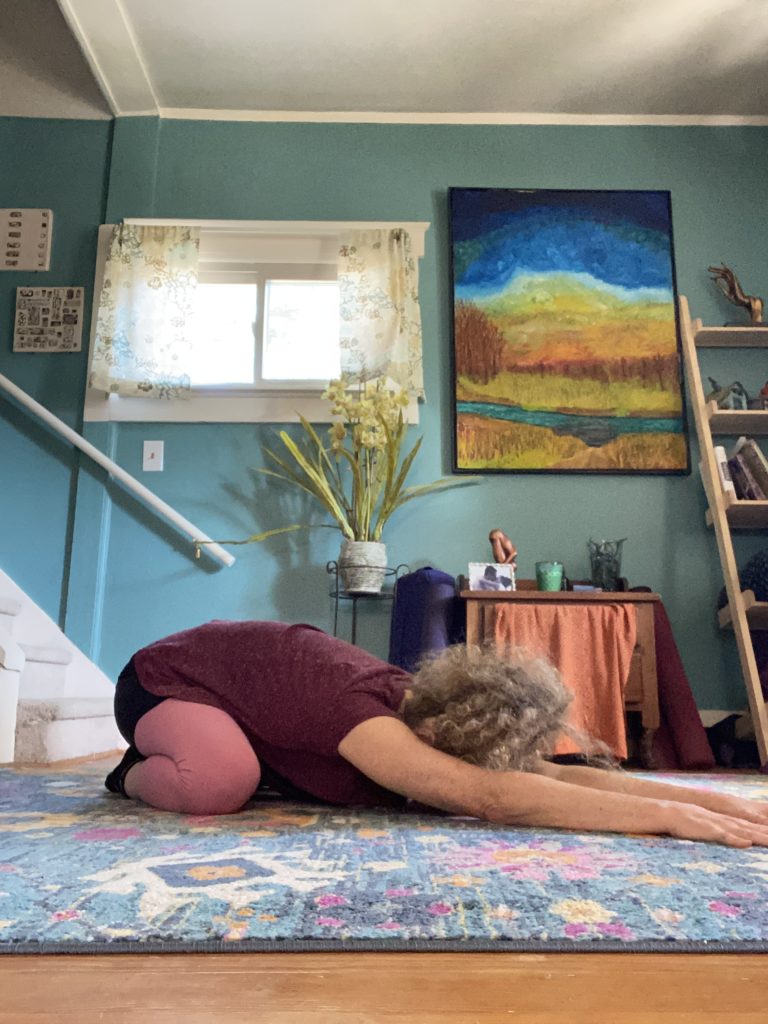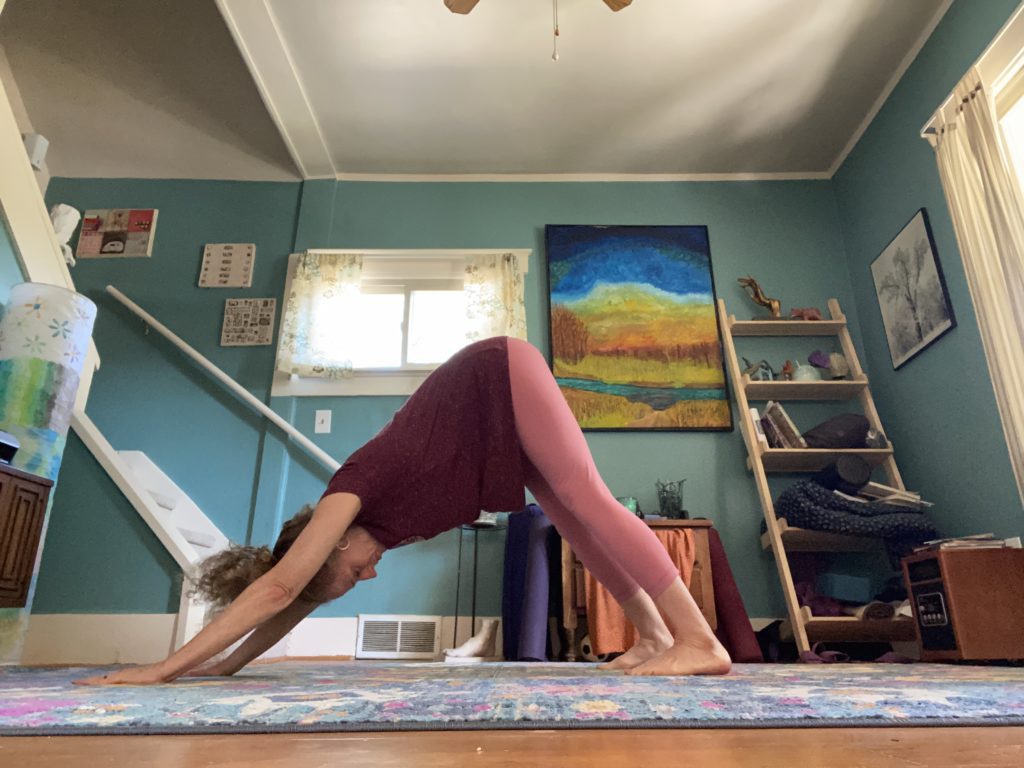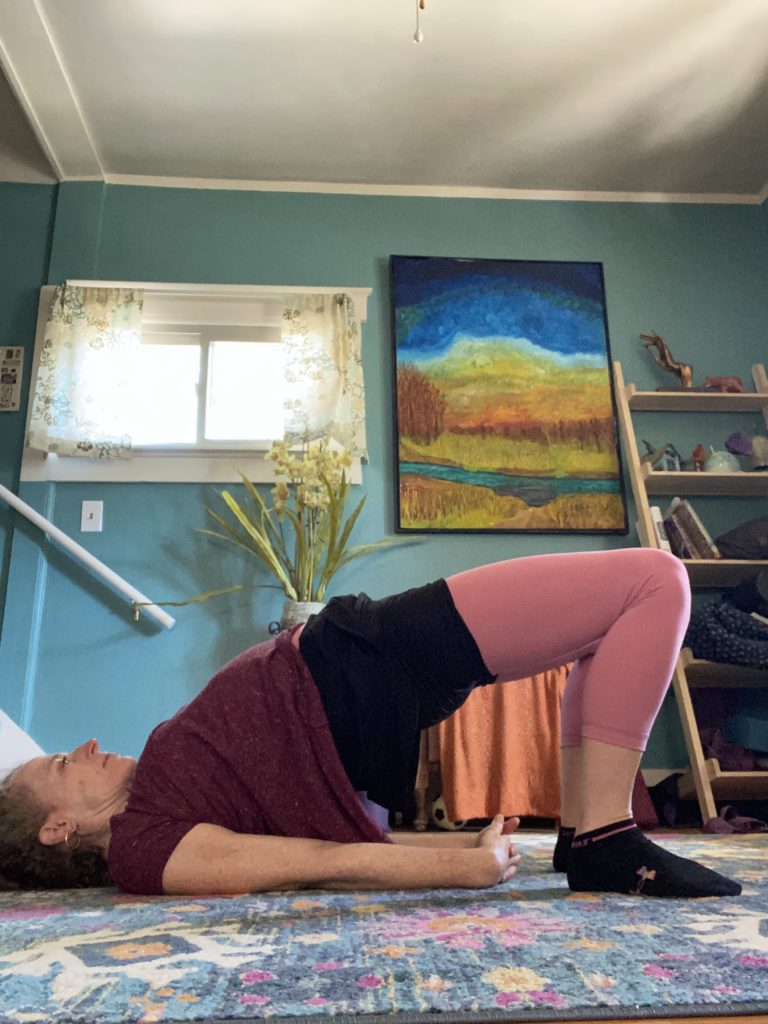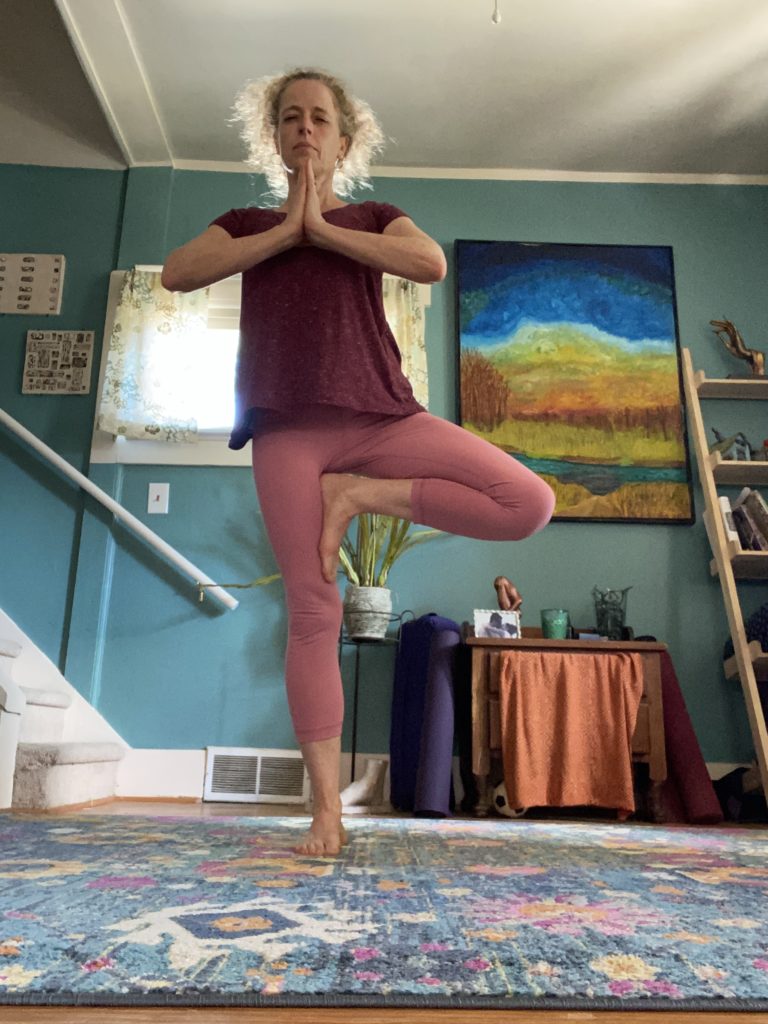When you first start practicing yoga, it can be overwhelming trying to understand even the most basic yoga poses.
On the surface, foundational poses like child’s, downward dog, bridge, and tree might look pretty simple. But each one has its own challenges.
There are subtle nuances and modifications to each pose as well. Knowing what these are can help you find your way into the expression that works best for you.
Breaking Down Basic Yoga Poses
It can take several (or even several dozen) classes before you know how to do these poses and how they’re supposed to feel. The most important thing in any pose is to keep a deep controlled breath and never enter a place of pain.
In every pose, you’re working to find your edge. That’s the place in the pose where any more would be too much, but any less would not be enough. And the edge can change from week to week, day to day, even hour to hour.
So without getting too loaded down in details, we’ll take a look at four of the most common basic poses: child’s, downward dog, bridge, and tree.
1. Child’s Pose (Bālāsana)

Child’s pose is a resting pose. It may be where you start your class, but it’s more often a pose taken in between other more challenging poses to bring yourself back to your breath and a sense of calm.
To come into child’s, you come onto hands and knees in a table. Then bring your toes together, knees wide, and sink back onto your heels. Your arms can be stretched forward (as in the photo) or alongside the legs. Then you breathe fully into your belly, back, and side bodies.
If you have tight hips, however, it can take a while before child’s feels like a resting pose. In this case, inserting a blanket or pillow between the ankles and hips to provide support is recommended. By the same token, for those with painful knees, laying on the back and hugging the knees to the chest would be the best modification.
2. Downward Facing Dog (Adho Mukha Svanasana)
The first time you come into downward-facing dog (often shortened to “downward dog”), you might be hoping that it’s a pose you won’t have to do much in yoga.
Unfortunately, it’s a yoga standard – as it’s the starting position for stepping into many standing poses (some of which we’ll look at in our next post).

Downward dog can be a bit awkward at first. But it’s essentially taking your body and turning into an upside-down V (see picture). For many newbies, it looks more like an upside-down U. That’s totally normal. Especially when the back and/or hamstrings are tight.
The best way to enter downward dog is from hands and knees (table). You curl onto the toes and then with an exhale, send the hips up and back and straighten the legs. For those who are more flexible, the heels may touch down on the ground. But it’s not a requirement.
By trying to send the hips to where the wall meets the ceiling behind you, you’ll achieve that long straight line in the spine. Just like child’s, it may feel foreign at first. But over time, downward dog can feel very much like coming home.
3. Bridge (Setubandha Sarvangasana)

For those who come to yoga with a background in Pilates or other fitness classes, bridge will be familiar.
Laying on your back, walk your feet as close to the hips as possible without coming up on the toes. Be sure the feet are hip-width distant apart. With an inhale, begin to roll the spine up off the earth one vertebra at a time. Eventually, you may roll up onto your shoulders and interlock the hands underneath the back (see photo).
Hold there and breathe. By pressing down into the arms and the feet, you’ll find a deeper arch. Just be sure you don’t start holding your breath. When descending, articulate the movement by coming down one vertebra at a time.
4. Tree (Vrikshasana)
Balance is an intrinsic part of yoga – both on the mat and off of it. Many standing poses where you’re on both feet will challenge your balance. There are even poses down on the floor that include balance.
As far as the one-legged balance poses, tree is probably the one that’s offered more than any other at the beginner’s level. That said, it’s not exactly easy.
Similar to the edge, the ability to balance can change weekly, daily, or even hourly. Learning to accept that balance (and really just about everything) is transient is one of the most beautiful aspects of yoga.

The best way to approach tree is to bring the palms to prayer in front of the heart and start on both feet. Feel rooted to the ground. It’s important to establish a deep and stabilizing breath before attempting to transition to one foot. Once you’ve found that base, slowly start to bring one foot up off the ground and place the sole of the foot to the inner ankle, calf, or thigh. Be cautious to not put the foot against the inner aspect of the knee.
Once you’ve struck the balance, continue to take deep and intentional breaths. If the balance remains steady, you can bring the arms skyward or add in some twisting. And if you fall out, that’s fine! Just get back in and try again.
Ready to Explore the Beauty of Yoga?
Maybe you’ve tried some of these basic yoga poses on your own and are curious about getting deeper into the practice. Or perhaps you’ve never done a single pose.
No matter what the case, we can help you start your exploration.
Contact us today to find out about our mobile yoga and mindfulness practices. We will bring yoga right to you. And we have both virtual and on-site offerings.
What can yoga do for you?



